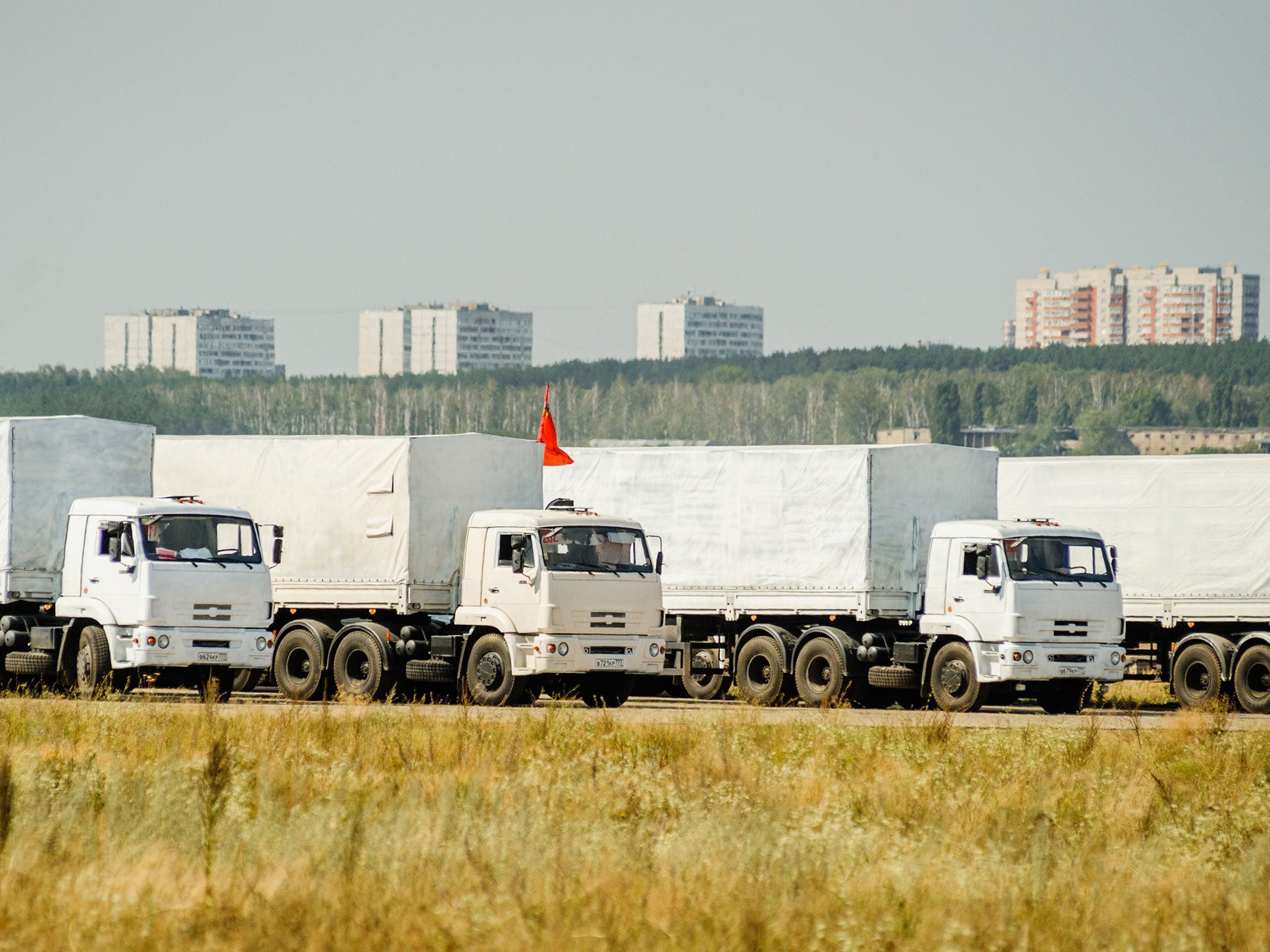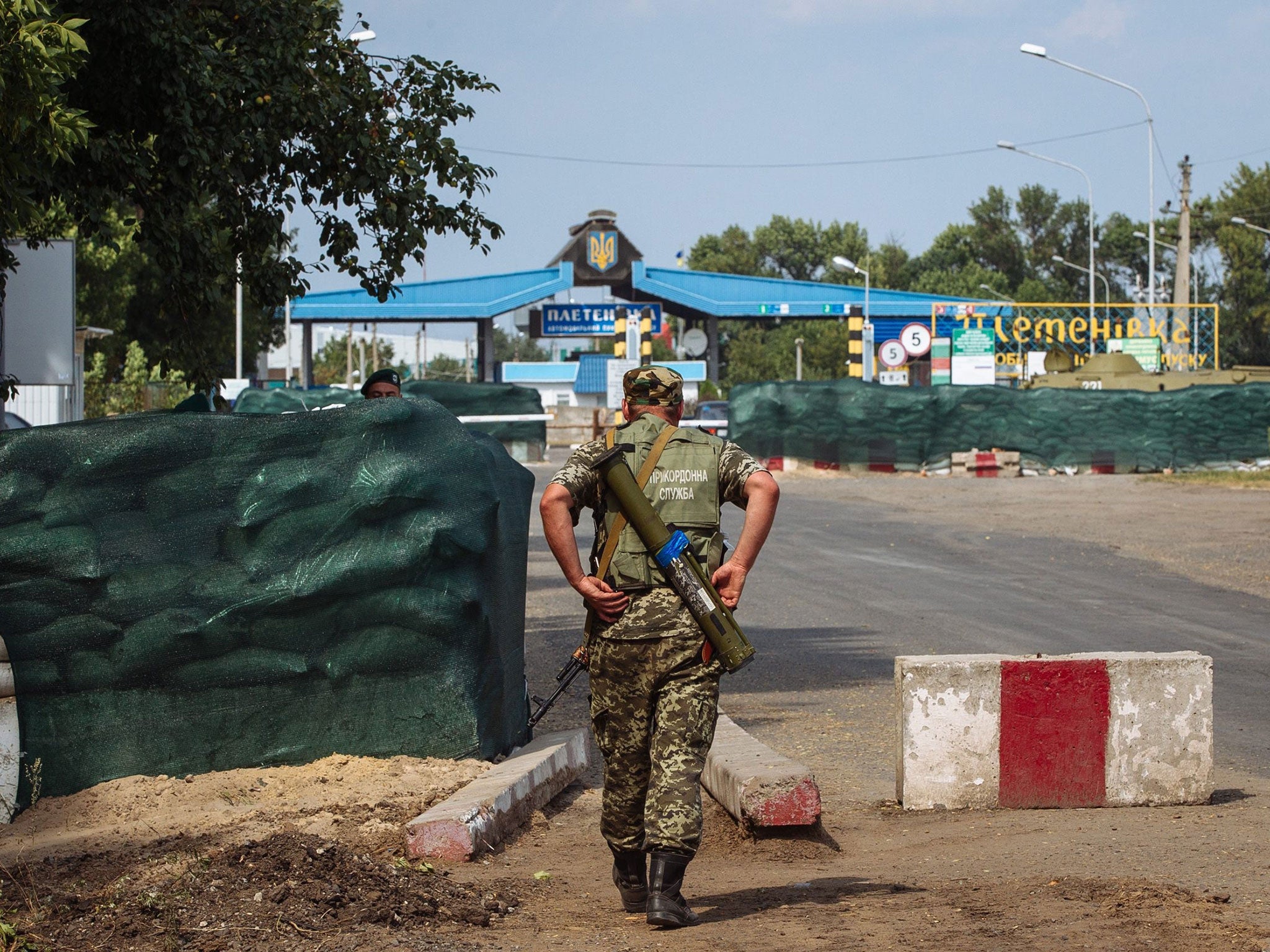Ukraine crisis: Humanitarian aid mission stalls over fears it will be used as pretext for Russian invasion
The 170-truck convoy remains in western Russia amid confusion over where it will cross the border and its role

Your support helps us to tell the story
From reproductive rights to climate change to Big Tech, The Independent is on the ground when the story is developing. Whether it's investigating the financials of Elon Musk's pro-Trump PAC or producing our latest documentary, 'The A Word', which shines a light on the American women fighting for reproductive rights, we know how important it is to parse out the facts from the messaging.
At such a critical moment in US history, we need reporters on the ground. Your donation allows us to keep sending journalists to speak to both sides of the story.
The Independent is trusted by Americans across the entire political spectrum. And unlike many other quality news outlets, we choose not to lock Americans out of our reporting and analysis with paywalls. We believe quality journalism should be available to everyone, paid for by those who can afford it.
Your support makes all the difference.A Russian aid mission to eastern Ukraine – which Ukrainians feared was a pretext for a Russian invasion – is still stranded in western Russia.
Around 170 white trucks were parked at a military base in Voronezh amid confusion as to how they would get to Ukraine and what their purpose would be once they arrived.
Ukraine and Russia have tentatively agreed that the aid will be delivered to a government-controlled crossing in Ukraine’s Kharkiv province, which hasn’t been touched by the months of fighting that have wracked neighbouring regions. Still, it remained unclear whether the convoy would take that route or travel to Ukraine via pro-Russian rebel-held border posts, which Ukraine could consider an act of war.
Russia said that claims made by Australia and Nato that it could use a humanitarian-aid convoy to Ukraine as a cover for invasion were absurd. Amid the tensions, the Russian President Vladimir Putin travelled to Crimea, the Black Sea peninsula that Russia seized from Ukraine in March, where he was to chair a session of his Security Council.
A meeting with Mr Putin’s entire cabinet and most Russian politicians was scheduled for today. A key sticking point for Ukraine was that all incoming humanitarian aid must be vetted by the International Red Cross. Officials in Kiev said the aid cargo could be unloaded at the border and loaded on to vehicles leased by the Red Cross.
But the Russian Foreign Minister, Sergei Lavrov, said while the unloading idea had come under discussion, it was rejected for cost reasons.
The estimated 2,000 tons of aid, which reportedly includes goods ranging from baby food to portable generators, is intended for civilians in the Luhansk region, the scene of some of the fiercest fighting between government troops and pro-Russian separatists.
The regional capital of Luhansk has had no electricity for 11 days and only the most essential goods are available. The UN said that there had been an escalation in the violence in east Ukraine in recent weeks.
Cecile Pouilly, a UN spokeswoman, said the death toll has risen to at least 2,086 people as of 10 August from 1,129 on 26 July, while a further 4,953 people have been wounded in the fighting since mid-April.

Ms Pouilly said that on average more than 60 people a day have been killed or wounded as part of “a clear escalating trend” of violence, including Ukrainian armed forces, civilians and armed groups.
Intense fighting was still taking place in the main rebel-held city of Donetsk. At least 12 militiamen fighting alongside government troops were killed in an ambush outside the besieged city.
Inside the city, at least three people were killed overnight on Tuesday as the government intensified its shelling.
Artem Skoropatsky said the Right Sector volunteer fighters were shot dead while travelling on a bus and many others on the bus were wounded and taken captive. He did not know how many.
“There is a suspicion that the wounded will be treated very harshly and could be shot,” he said.
Right Sector played a marginal – if highly visible – role in the protests that culminated in the overthrow of the Ukrainian President Viktor Yanukovych in February.
The group’s far-right nationalist affiliations have made it a target of lurid reporting in Russia state media, which has sought to cast the post-Yanukovych government as extremists.

Andriy Lysenko, a spokesman for Ukraine’s National Security and Defence Council, said that 11 servicemen were killed in the previous day’s fighting, but he could not immediately say whether that figure included the Right Sector militiamen.
Government troops have laid siege to Donetsk and nearby rebel holdings in their push to quash the pro-Russian insurgency.
They have largely refrained from street-to-street fighting, favouring often inaccurate rocket fire.
Residents said the intermittent artillery barrage lasted around two hours. City authorities said 10 residential buildings and the wing of a hospital were struck. Associated Press reporters saw two bodies lying in a street this morning in Donetsk’s south-western Petrovsky district.
The city government reported three deaths. Russian media reported that Igor Strelkov, the Russian leader of the rebels, was seriously wounded today.
The shelling has damaged power plants and gas pipelines, leaving left large parts of the city without electricity or gas.
The fighting in eastern Ukraine began in April, a month after Mr Putin annexed Crimea.
AP and Reuters
Join our commenting forum
Join thought-provoking conversations, follow other Independent readers and see their replies
Comments